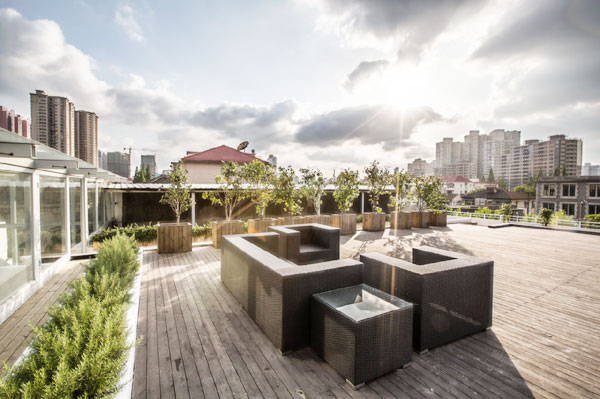| Greening the brownfields | |||
http://english.dbw.cn銆€銆€
2013-09-13 07:32:36
|
|||
|
A French architect demonstrates the sustainability of redeveloping, rather than replacing, China's existing structures. Shi Jing reports in Shanghai. China is discovering brownfields can be green, and some think they'll become the new black for the country's urban planning. It's a rethinking of redevelopment that could prove crucial to its breakneck urbanization. As China's galloping economy slows to a stride, experts are realizing the economic and environmental benefits of extending existing buildings' use by up to 20 years rather than destroying them and building hundreds of new towers in their place. This is what French architect Thomas Austerveil says he has learned over two and a half years of dealing with Chinese customers. A specimen of his vision is the Jing'an Design Center, tucked in a quiet corner of downtown Shanghai. The four-story loft was sired by the renovation of two factory buildings. The original windows were enlarged. Wooden spiral staircases were installed. A black-and-white color scheme was introduced. And vegetation, terraces and public spaces were infused into the structures. |
|||
| Author锛? 銆€銆€銆€Source锛? xinhua 銆€銆€銆€ Editor锛? Yang Fan |
|||
 涓枃绠€浣?/a>銆€|銆€
涓枃绠€浣?/a>銆€|銆€











